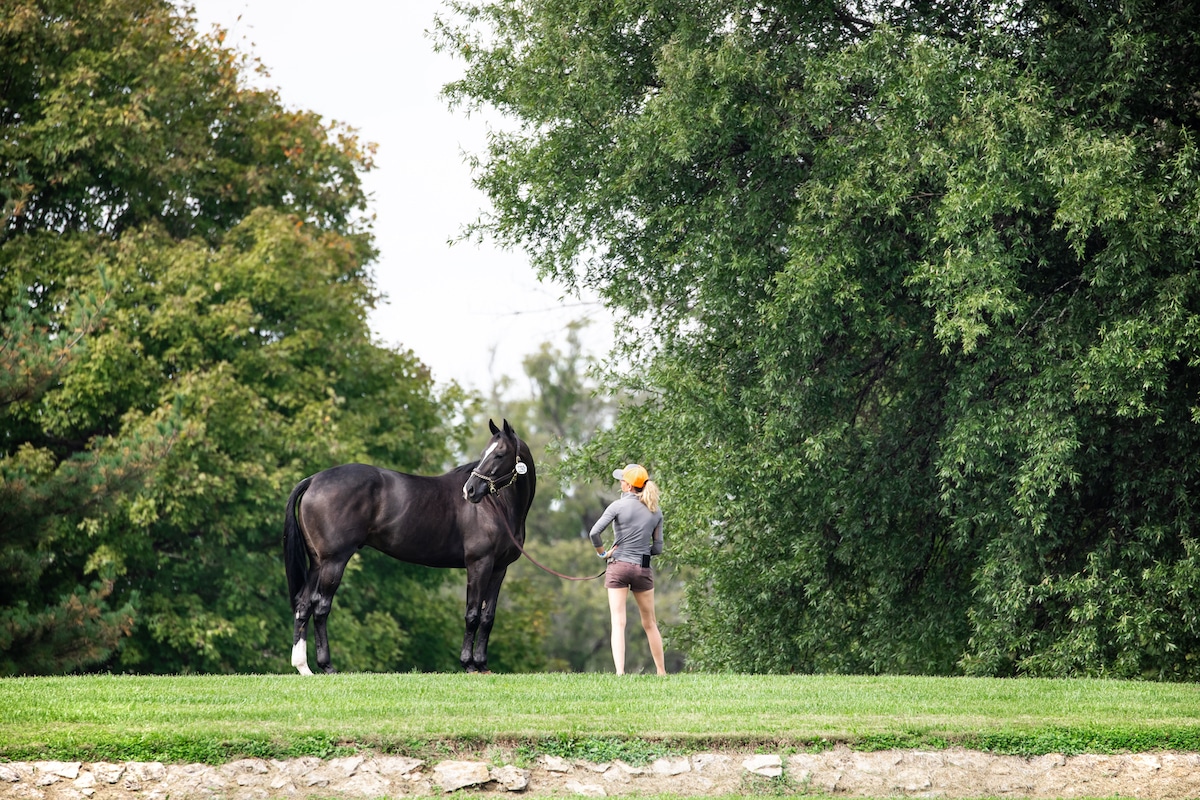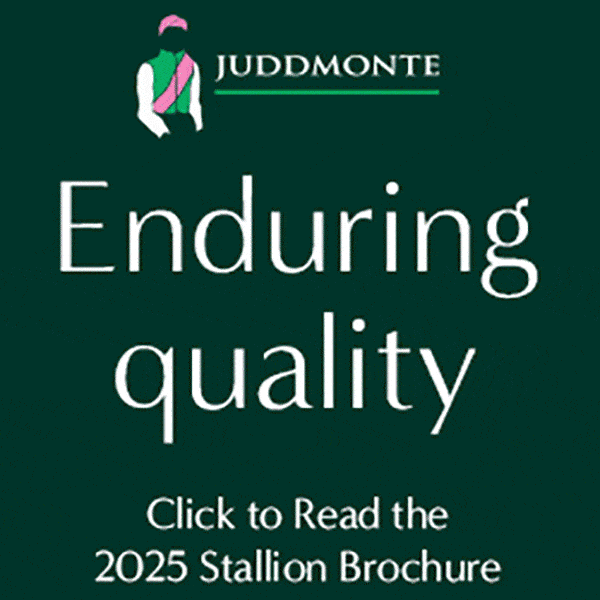How you handle the care and nutrition of your Thoroughbred in the first 100 days of his second career can affect his long-term success.

Bethany P Photography
Retired Thoroughbred race horses coming directly off the track usually benefit from a bit of rest and relaxation to help them wind down emotionally and allow their bodies to re-set from the many stressors that are a normal part of a race horse’s life. In short it allows them to be a normal horse and prepares them physically and mentally for whatever their future career might be.
The first couple of weeks are an excellent time to assess the special needs of each individual horse. More than half of all retired horses coming off the track will present with gastric ulcers and/or hind gut inflammation or colonic ulcers. Many will have a poor or inconsistent appetite, low body condition, weak top line, or be suffering from lameness of one sort or another. Some will be confused as to how they are to interact with other horses and their new handlers who in most cases now treat them in a significantly different manner than what they had become accustomed to.
Your retired race horse has just come off the transport and is now looking around at his new home and handlers – what do you do first? If the horse arrives at night or very late in the afternoon I usually put them in a stall with plenty of fresh clean water and all the grass hay they want. I may also orally dose them with electrolytes and an intestinal stimulant, especially if they have been on the road for more than 3 or 4 hours. I will then turn the horse out by him or herself in a relatively small secure paddock the next day; if the horse arrives early enough in the day I will sometimes turn them directly out in such a paddock straight off the transport.
In either case I make sure there is plenty of fresh clean water and grass hay or pasture available in the paddock. I like the paddock to be large enough to allow the horse to run and buck, but small enough to facilitate catching the horse and easily keeping an eye on the horse that is free of obstacles and corners that could be hazardous to a horse that just received his or her get out of jail free card. Some people like to give a tranquilizer before turning a race horse out for the first time; I personally do not normally do this because I like to get a “read” on the horse in their normal state of mind and I have never had a horse hurt themselves when turned out like this.
Be aware that many off the track Thoroughbreds come to you with less than optimal feet. Unhealthy feet can affect all other body parts. For example, sore backs, sore hocks, gastro-intestinal inflammation, and/or poor appetite can all be secondary to discomfort caused by poor hoof mechanics. I recommend that you have a competent farrier evaluate the horse’s feet as soon as possible for low or high palmer/planter angles, thin soles, crushed heels, poor digital alignment, overall hoof mass and any other condition that could contribute to discomfort either in the foot directly or other parts of the body. A horse that is in chronic discomfort usually is not very pleasant to be around. I have seen horses that were considered mean and aggressive transform into calm and compliant horses that enjoyed interaction with people and their new job once the primary cause of their discomfort was alleviated.
The next important item on the list for your off the track Thoroughbred is what to feed. This is a situation where it never fails to return to basics (fresh air, fresh water, good quality forage and plenty of it). Most of the time you will have no idea what the horse was being fed before it came to you so you want to offer a diet that is safe in regard to gastro-intestinal function, but you also want to feed something that the horse is likely to eat, especially since many race horses develop a finicky palate due to the stress of intense exercise. I like to start with a beet pulp based feed that also contains some grain such as Triple Crown Complete. If, upon first presentation the horse looks at this feed with an expression of what is this I will add a bit of sweet feed or plain oats in order to get the horse on feed. I will then reduce the amount of added grain in the diet over the next 7 to 10 days until I am feeding Triple Crown Complete or in some cases Triple Crown Senior only.
Achieving normal digestive function will go a long way towards the supporting the special needs of the individual horse. A horse’s special needs might include improving a weak top line, increasing body weight and condition, improving hair coat quality, improving hoof growth rate and/or hoof quality, normalizing immune function, increasing or decreasing energy levels as the case may be, addressing injuries such as fractures, tendon or ligament tears, strained muscles, neurological disorders such as EPM and/or joint issues.
Where you and your off the track Thoroughbred are at the end of the first 100 days will be influenced by how well you assess and address the individual needs of your horse during the first 30 days. Many times when you address what appears to be an obvious issue (sore hocks or gastric ulcers for example) you either get no improvement or a short lived improvement. This is because you have not yet been successful in “uncovering” the primary problem. If you treat an “obvious” problem but get little or no response it does not necessarily mean that your treatment or approach was wrong or ineffective, it more likely means that there is another issue that is actually the primary problem so I would encourage you to keep looking until you find it. Don’t just try different therapies to address the same issue and body parts, often the most obvious problem is the not the primary problem.
For example, many racing Thoroughbreds develop sore backs and hocks which in turn may cause intestinal inflammation, which in turn results in poor appetite, which in turns results in poor body condition and performance – the obvious treatment is to inject the hocks and facilitate physical therapy and chiropractic adjustment for the back along with providing omeprazole and intestinal conditioners plus high fat supplements to improve body condition and hopefully performance. This approach usually improves the horse’s comfort and performance but only temporarily because the primary problem has not been addressed which in many racing thoroughbreds is a negative planter angle; fix it and the other problems either take care of themselves or can be improved on a more permanent basis. Don’t be surprised if your otherwise “high strung” Thoroughbred becomes relatively calm and compliant when the primary cause of discomfort is finally alleviated.

